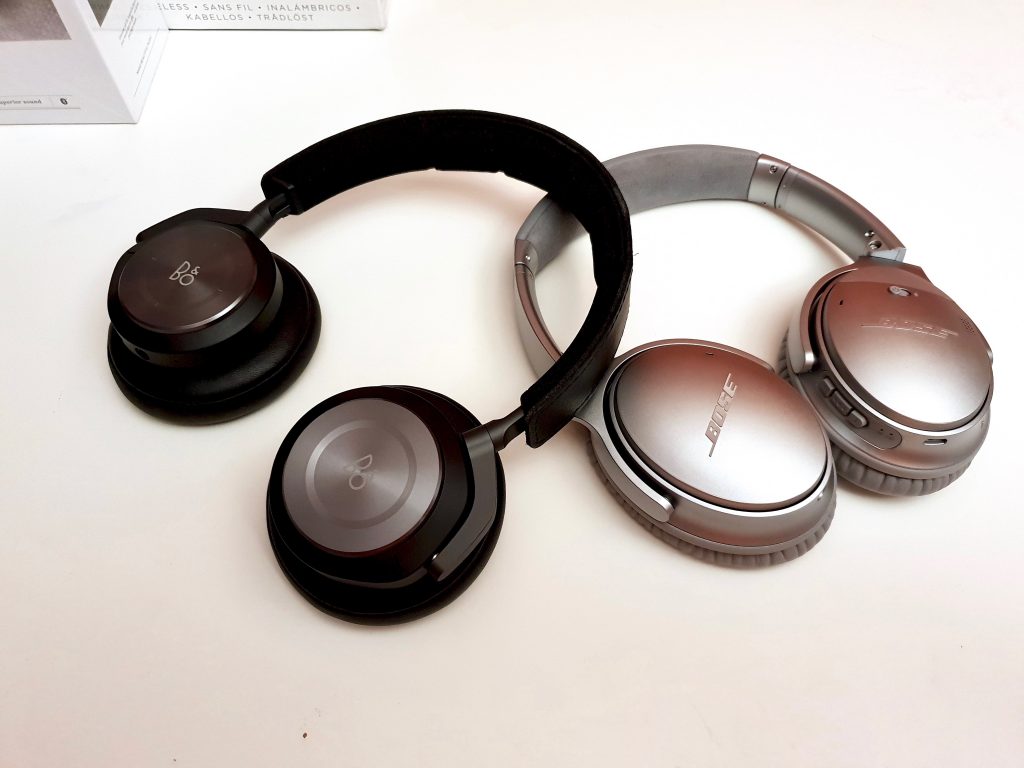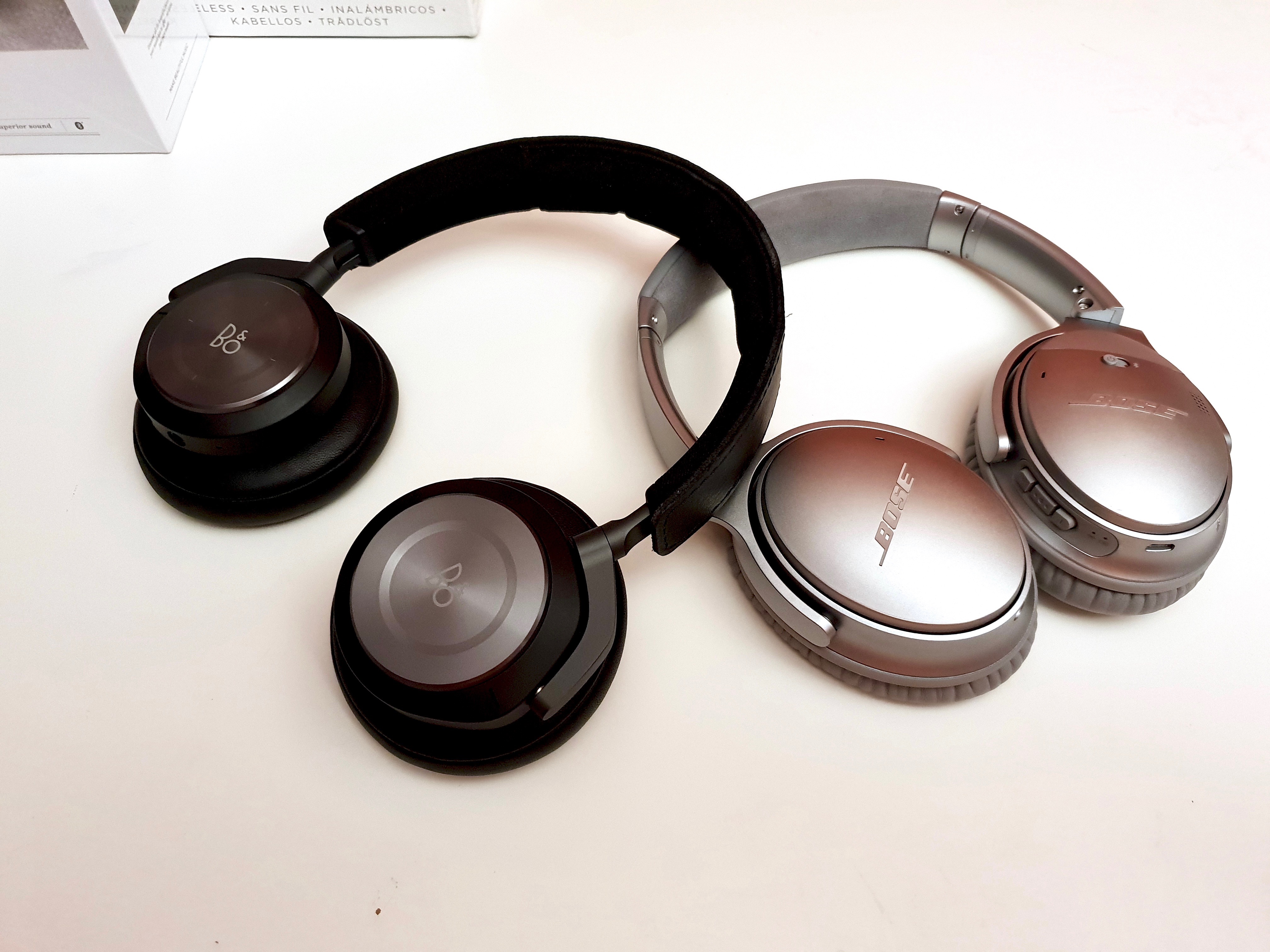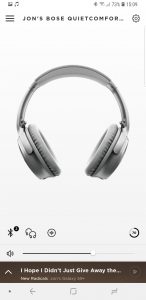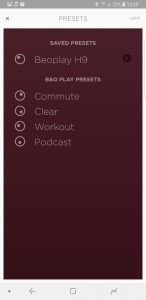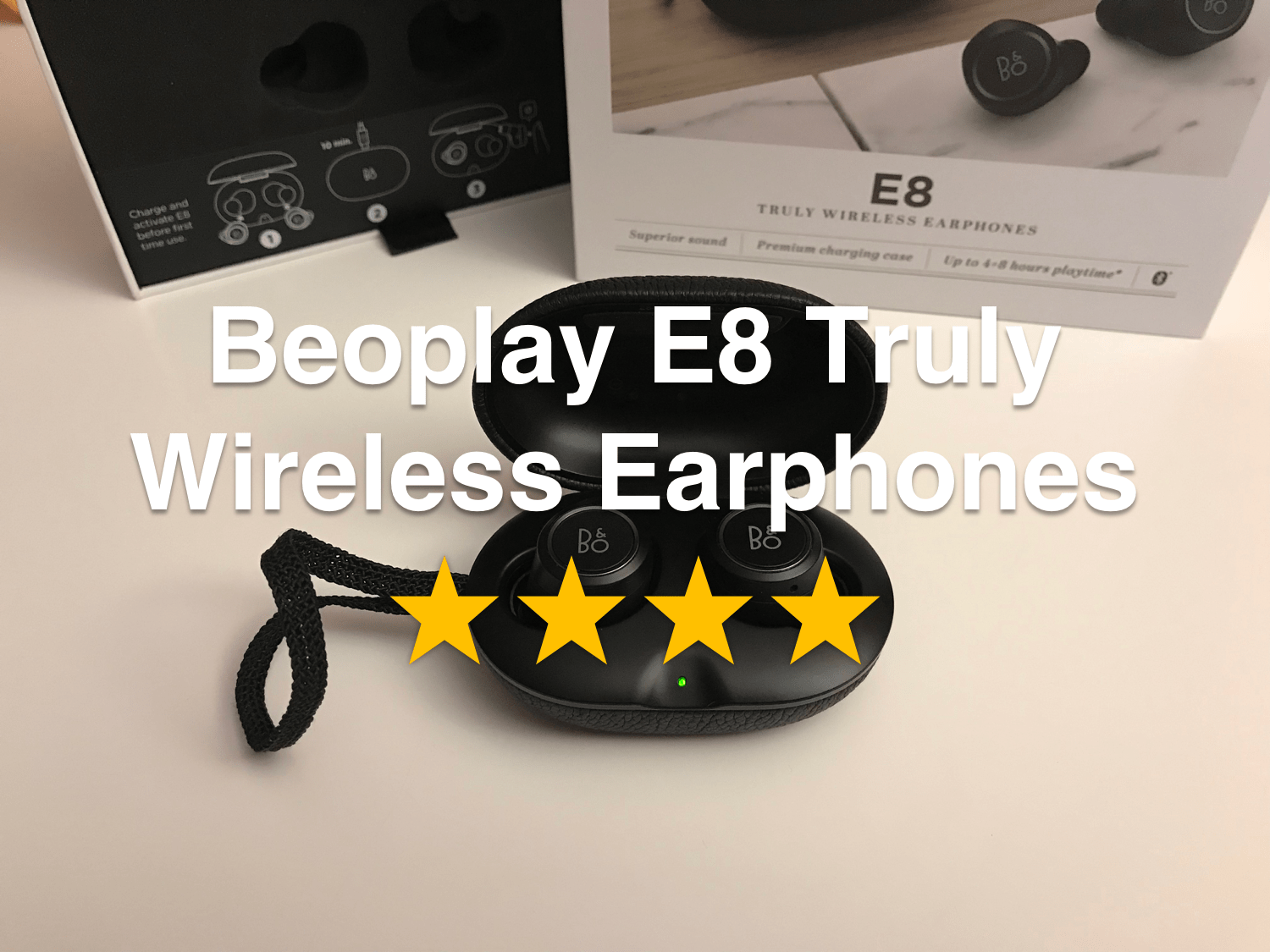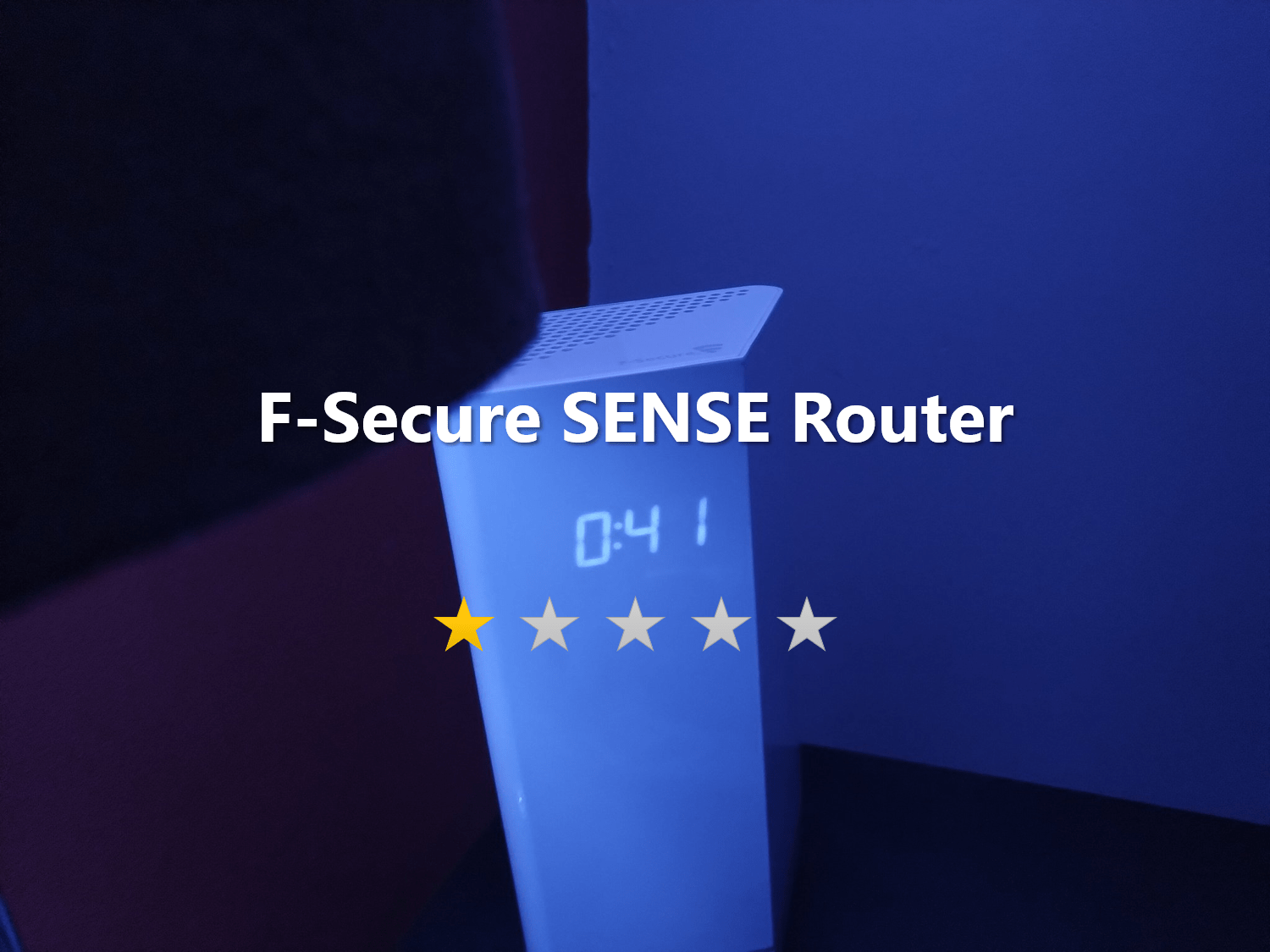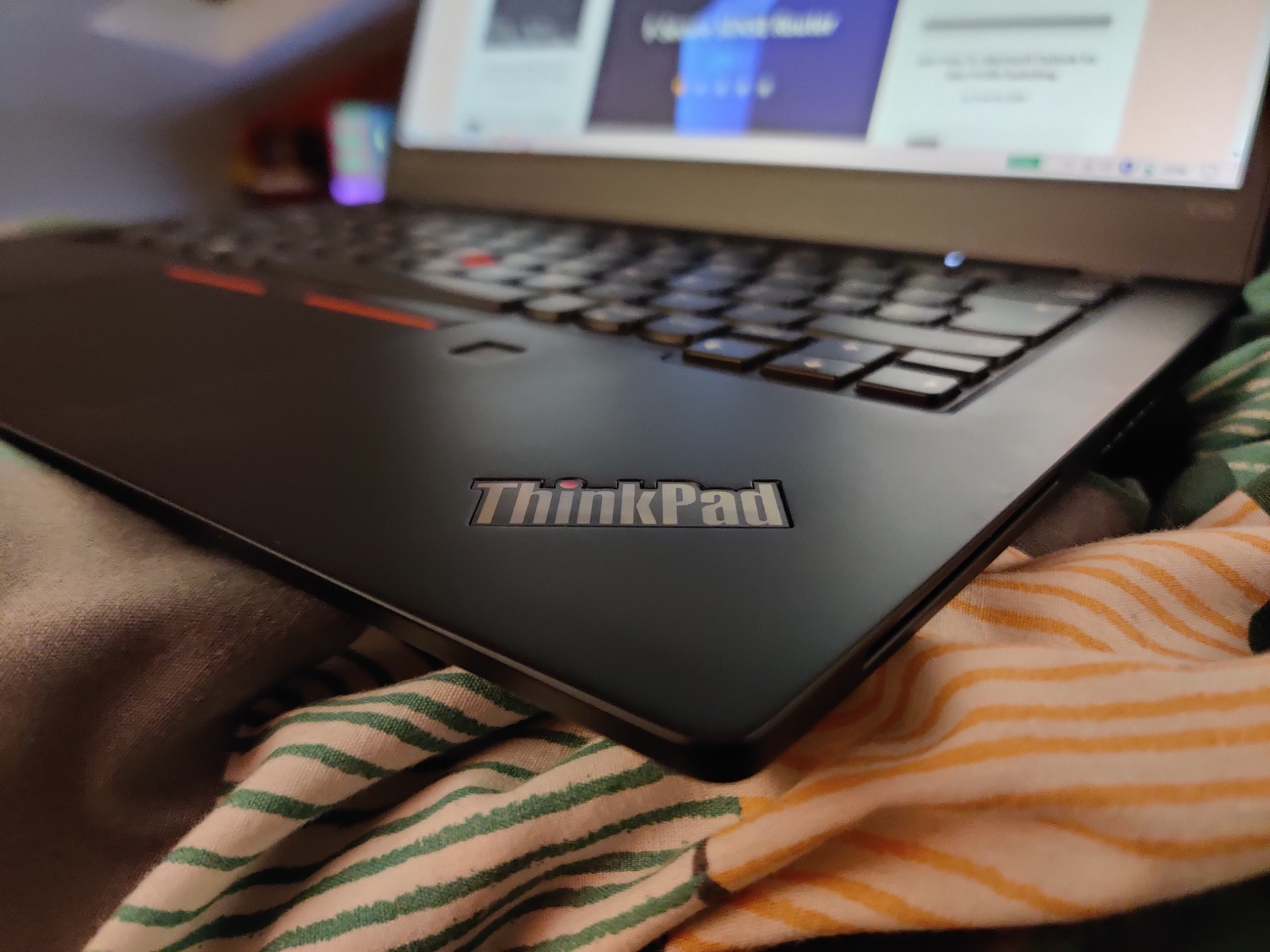If most reviews from popular outlets are to be believed, the Bose QC35s (and QC35 II, which are identical in every way except for the Google Assistant button and a differently designed carrying case in the box) are unrivalled in the wireless over-ear noise cancelling headphone market. How true is this though? Do they really have the best active noise cancellation? Are they really the most comfortable? Are they really the best for sound quality in this product range? These are the questions I intend to answer when comparing them to the Beoplay H9i from the high-end Danish brand Bang & Olufsen.
This review compares the H9i and QC35 (series I), but any differences with the QC35 II are made clear so this review can be used to compare the H9i and QC35 II too. Please note I also own both pairs of headphones, and bought them ourselves. This post is not sponsored by anybody.
Sound
When buying a pair of headphones, sound is the most important consideration for me. Both headphones are good to say the least. Bose audio products are typically dismissed within the audiophile community, often with the “No highs, no lows, must be Bose!” quip. I disagree with this assessment with these headphones. They sound good – not great or even very good, but good (and better than the Sony WH-1000XM2, which sound muffled and muddy even with extensive EQ tweaking to me). The QC35s mostly sound clear, and there is very little difference between in sound quality between the various ANC options in the app. Bose do have a downside to sound quality however, when turned up loud the case rattles and bass is boomy and distorted. The QC35s also sometimes lack definition and have a below average soundstage, which is disappointing when the Sony WH-1000XM2 have a good soundstage but worse sound overall in my eyes (or ears, rather). The QC35s go very loud on some phones, but are quiet on other devices. They can go to extremely loud on my Samsung Galaxy S9+ (the phone displays it as 150% volume), but on my BlackBerry Key2 and MacBook Pro they sound rather quiet and need to be at 75% volume to be a decent listening experience.
Despite the QC35 having good sound, the Beoplay H9i are in a league of their own. Their out-of-box sound is perfect for me, they have excellent soundstage and instrumental separation. The H9i sound is also customisable, which gives them an edge over the QC35. They can be tweaked in the Beoplay app in the section B&O refer to as ToneTouch. Here you can move a circle around the screen into pre-defined areas and you can make the circle larger and smaller to tweak the sound further. There are also sound pre-sets. One issue with the H9i sound however is when ANC is turned on or off. They sound better to me with ANC switched off, with even better sound-stage and clearer highs and mids. This is something many reviews have picked up on, but what they fail to mention is that even though the sound with ANC on is worse than with ANC off, the sound with ANC on is still better than the competition by quite a margin. Some reviews also complain about the H9is not going very loud, but for me 60% volume is perfectly loud and anything above becomes uncomfortably loud. Both headphones sound better wired also, the H9i sound remarkably similar to the much lauded 2nd Generation Beoplay H6.
Both headphones use Bluetooth 4.x, the QC35s use 4.1 and the H9i 4.2. Unlike last year’s Beoplay H9, the H9is lack aptX and rely on AAC instead and fall back to SBC on devices that don’t support AAC (not that this means they struggle in the audio department – they sound orders of magnitude better than the H9 and the competition. There are also suggestions that AAC may be a preferable codec over aptX anyway too). The QC35s (and QC35 II) are limited to SBC and AAC too. Both pairs have little to no sound leakage at reasonable volumes which make them even more perfect for the commute.
Winner? Beoplay H9i.
The H9i are hands-down better sounding. Even with noise cancelling on, they are better sounding than the QC35 with clear highs, mids, and lows + better soundstage and instrumental separation. This is especially evident in complicated and loud songs, where the QC35s struggle to keep up and detail is lost and tracks sound messy the H9i are able to handle such tracks with ease.
Design, Build Quality, and Comfort
These two headphones couldn’t be further apart when it comes to design and build quality. While design is subjective, I think the Beoplay H9i are a considerably better designed pair of headphones compared to the QC35’s silver or black plastic coloured design that looks like it came straight out of 2004. The QC35s are made almost completely of plastic (including the ear cups that are made of plastic leather), with the only exceptions being being the headphone jack (we’ll come back to that later..), and the metal inside of the adjustment mechanism. Even the fabric on the headband is plastic (alcantara is in fact made of polyester and polyurethane). Despite this, the QC35s do feel somewhat sturdy and are light weight. They are better constructed, and feel higher quality than the similarity priced and also plastic Sony WH-1000XM2.
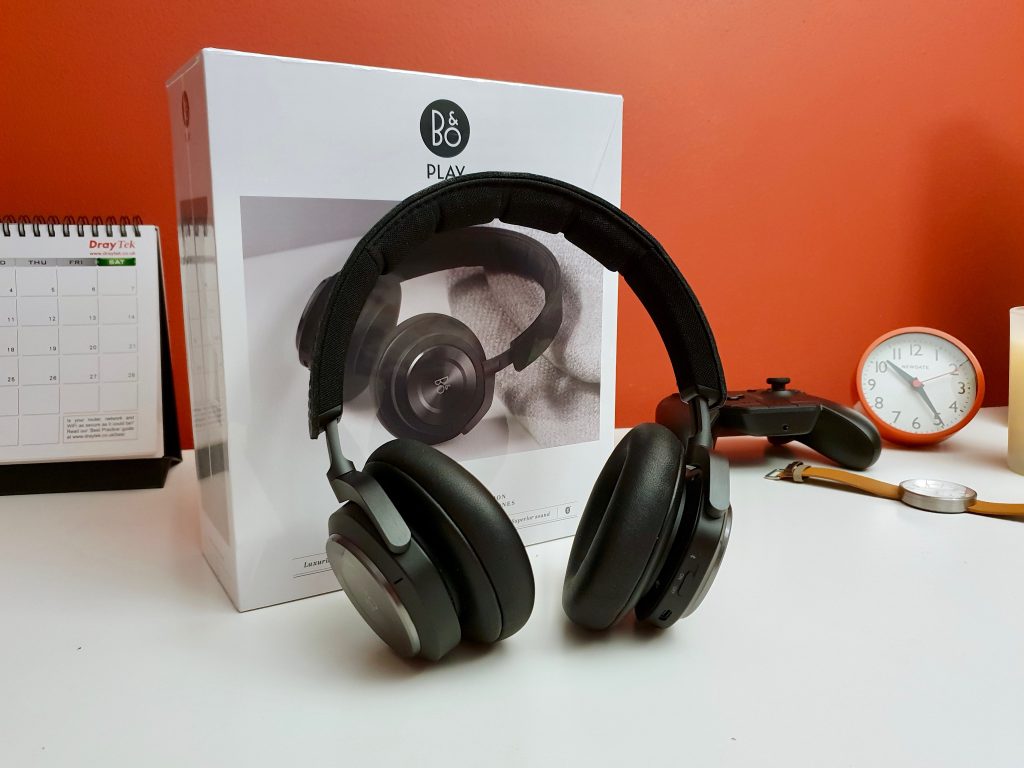
Comparatively the H9i are made primarily of aluminium and leather, with some plastic on the ear cups. They feel much sturdier than the QC35s due to the construction. This, however, is expected given they cost an extra £120 (RRP for the H9i is £449, compared to £329 for the QC35). I suspect the H9i will last longer than the QC35 due to the materials used, especially the leather on the ear cushions following some reviews that the fake leather on the QC35 ear cushions flake after around 11 months of ownership, and there are similar stories about paint on the plastic ear cups flaking too.
Comfort is also a huge consideration with headphones. I wear glasses, and they’re an extra consideration when deciding if a pair of headphone is comfortable. Comfort is subjective too. For me, the H9i are more comfortable over-all. They are considerably more comfortable than the QC35s with glasses on, and slightly more comfortable with no glasses. The QC35s are slightly better in hot weather (possibly as a result of the holes on the inside of the ear cushion) but otherwise the H9i feel better to me. Both have equally comfortable headbands, despite the H9i having less padding. I’d recommend trying a pair of each extensively though, as many regard the QC35 as the most comfortable on the market so they clearly differ for each person. To exemplify this point further, the B&W PX are typically very well reviewed for comfort but they hurt to wear for me. So try headphones on before buying.
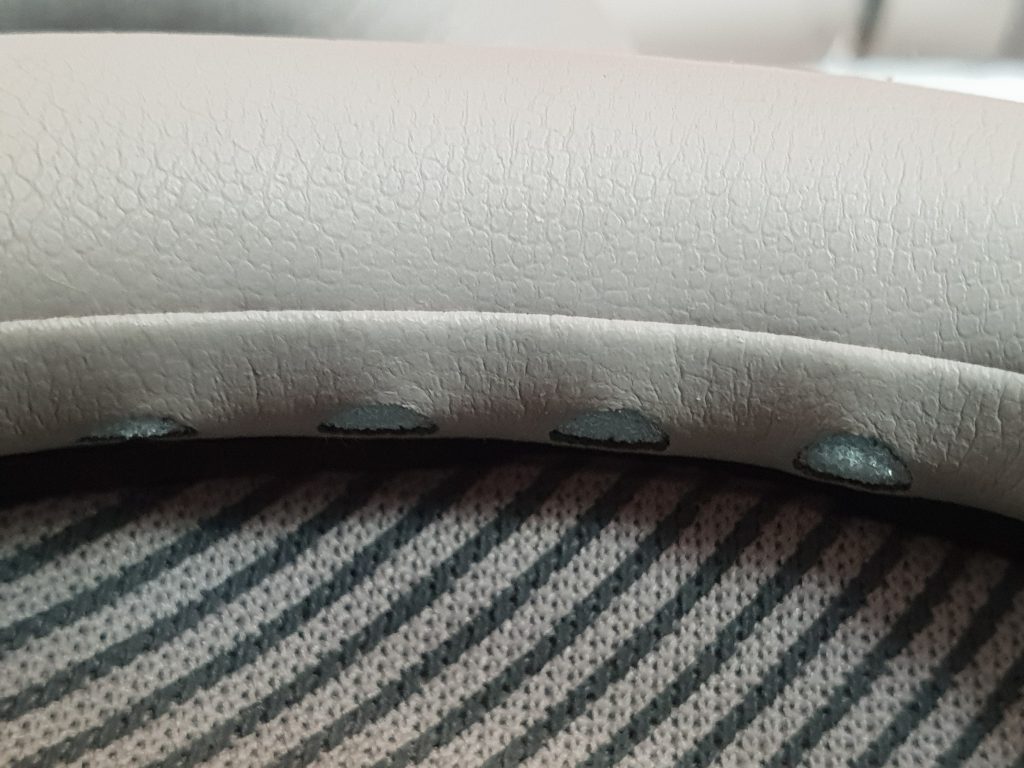
Winner? Beoplay H9i.
The H9i are undoubtedly better built, and it is my personal view they are better designed and more comfortable (but again both are subjective).
Controls and companion app
As with pretty much all wireless headphones these days, both the H9i and QC35 come with companion apps. Both are well designed aesthetically, and are simple to use. The QC35 offers more functionality on paper (settings for switching the ANC between full, medium, and off + listing the paired devices) but lacks an EQ. The Beoplay app offers an EQ in the app (ToneTouch as they call it), but controls for the ANC are on the headphones themselves.
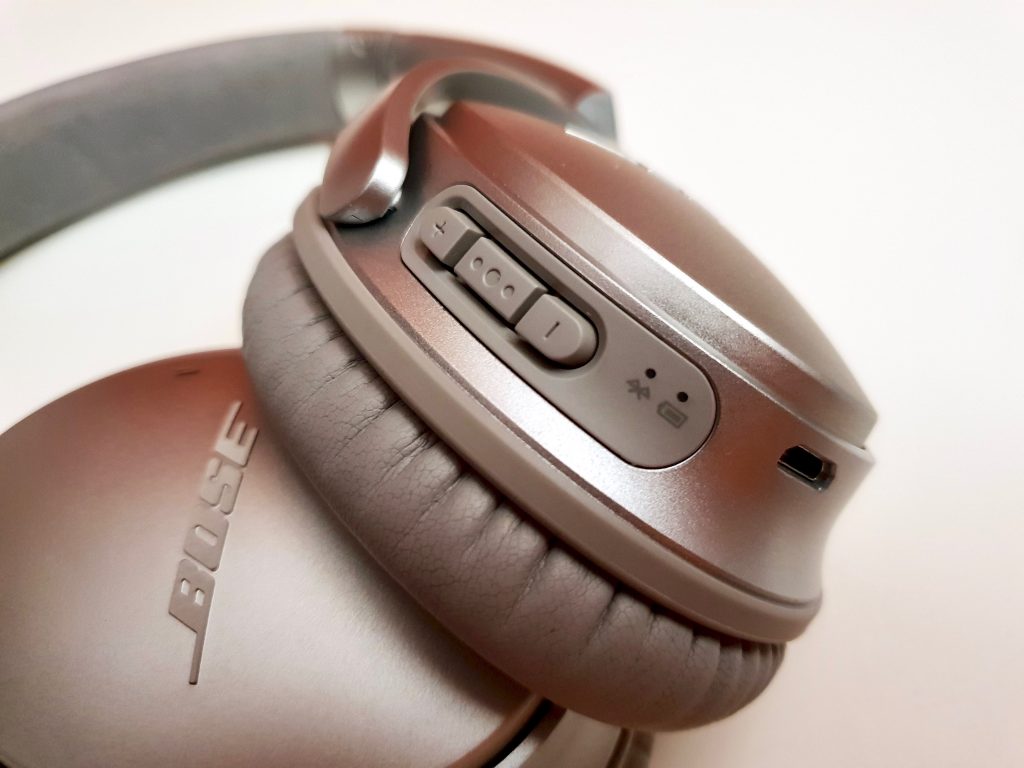
Controlling the headphones is a very different experience between the two. While the QC35s opt for plastic physical buttons on the right ear cup (volume up, volume down, and multi-button for skipping tracks and answering calls etc), the H9is use an aluminium touch sensitive panel (also on the right ear cup). With the H9i, you use gestures to control the headphones (swipe down for ANC on or off, swipe up for Transparency Mode, circle motion for volume control, and swipe forwards + back for track control, and tap for play/pause/calls). This is personal preference for sure, but I prefer the touch panel on the H9is – it feels more fun to use (and once you get used to the touch panel it’s a joy to use). The H9is on-device controls also offer more features (unlike the app), as mentioned you can enable Transparency Mode (which pauses music and pumps the outside into the headphones using the microphones) and you can control the ANC on-device too (although this is also now possible on the QC35 II). Both headphones use their power switch for pairing new devices, and can pair 2 devices at once each which is perfect if you use them with a computer and a phone. Both apps deliver firmware updates via their apps too.
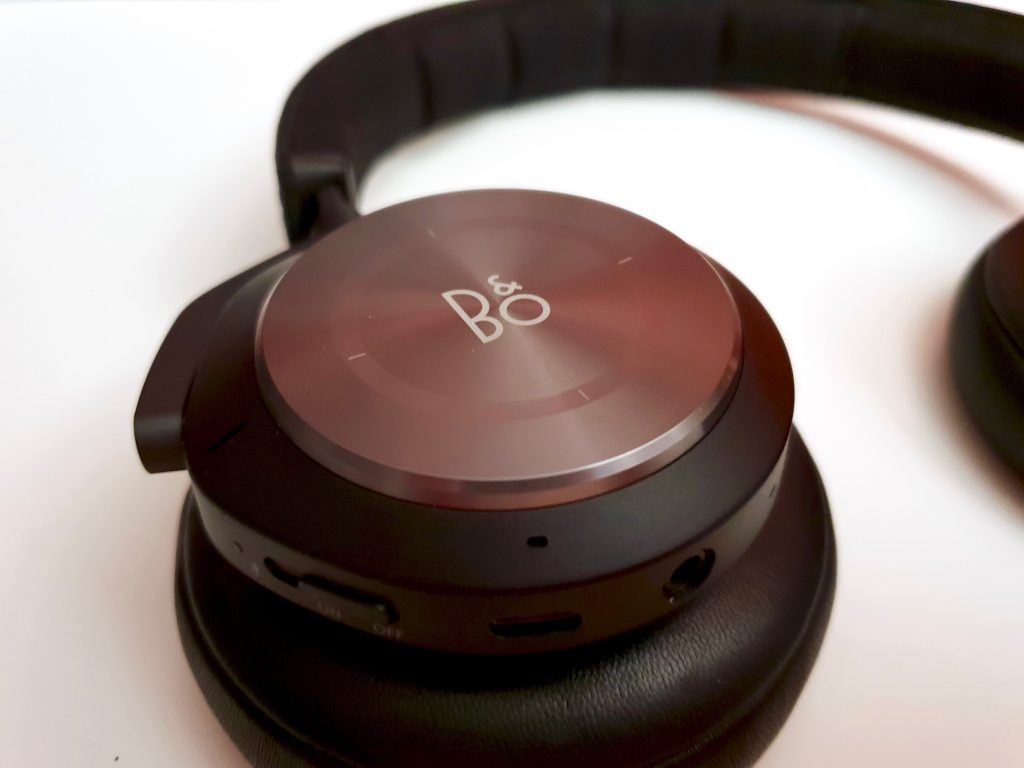
Apps:
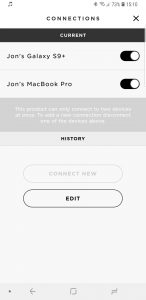
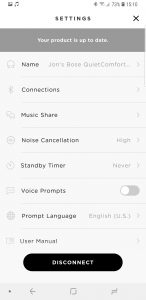
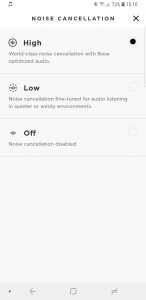
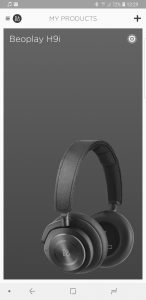
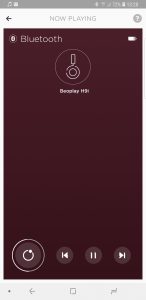
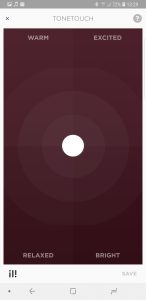
Winners? Beoplay H9i.
Only slightly. While the Beoplay app has fewer functions than the Bose Companion app, it does offer an EQ to adjust the sound to your choosing. The H9i also offer more functionality using the on-device controls to avoid taking your phone out of your pocket (or if you want to control things like ANC if you’re not even using your phone). Compared to the QC35 Series II, this would be a draw due to the extra button for Google Assistant that can be re-purposed for ANC controls.
Active Noise Cancellation
This one is quite possibly the most interesting. B&O’s first attempt at over-ear ANC wireless headphones were 2016’s Beoplay H9, they had considerably worse ANC than any of the competition from Bose and Sony, but the same £449 price tag. Things are very different with the H9i. If the Bose QC35 have the best ANC on the market and can be given 100/100 for that, I place the H9i at 94-95/100. There is no doubt that the QC35 still have better ANC though (and Bose now give you the option to set the ANC to full/medium/off). Both are excellent, but the H9i aren’t quite as excellent as the QC35. Both cut out idle chatter, loud consistent noises, bus noises, train noises, office noise, and fan noise. It is worth mentioning however that with the H9i switching the ANC on will result in lesser sound quality compared to having it off and the soundstage with tighten up slightly, but the sound is still better than the QC35. The H9i do have one downside in that when ANC is switched on in a quiet environment, there is a quiet hiss in the background from the ANC circuitry. It has been improved via firmware updates since launch, so might be able to be improved further and is only noticeable in places where you would benefit from switching ANC off for the better sound quality anyway.
Winner? Bose QC35.
The QC35s simply have better ANC. Not by much, but it’s better and slightly more effective and the controls within the app that allow for a medium setting to allow some sound in is brilliant. Plus they have no noticeable ANC circuitry hiss.
Day-to-day Battery Life
Both headphones offer around 20 hours of battery with ANC + Bluetooth switched on. B&O claim 18 hours, and Bose claim 20 but I have managed to get around 24 from the H9i and 22 from the QC35. The Bose win over the H9i for wired with ANC on however with the QC35 claiming 40 hours vs 24 for the H9i. However, the H9i have a user replaceable battery which can double the ANC + Bluetooth live to 40 hours in a matter of seconds compared to the hours it takes both headphones to charge. B&O have proven that devices can be well designed and have user replaceable batteries. The H9i can also be used whilst charging them if you plug them into a computer that supports USB audio devices, giving the H9i an edge here too.
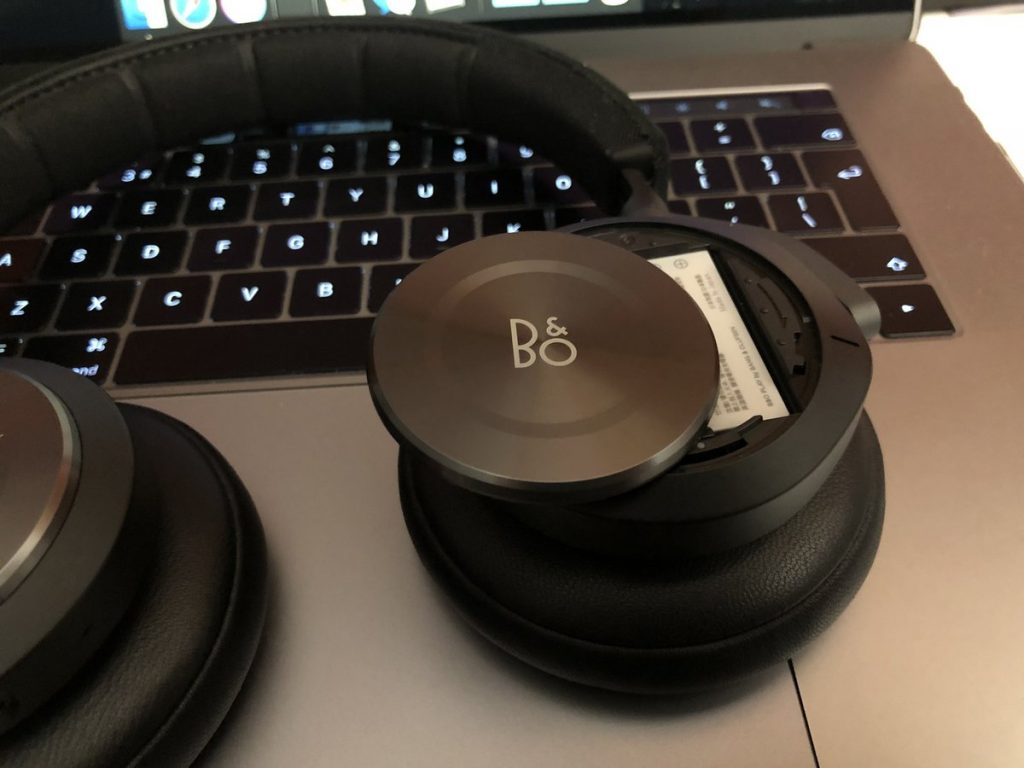
Winner? Beoplay H9i.
The Beoplay wins simply because you can replace the battery for yourself, resulting in both the headphones having a longer lifespan and also being easier than charging your headphones up on a long flight or if you simply forgot to charge them.
Included Accessories and Packaging
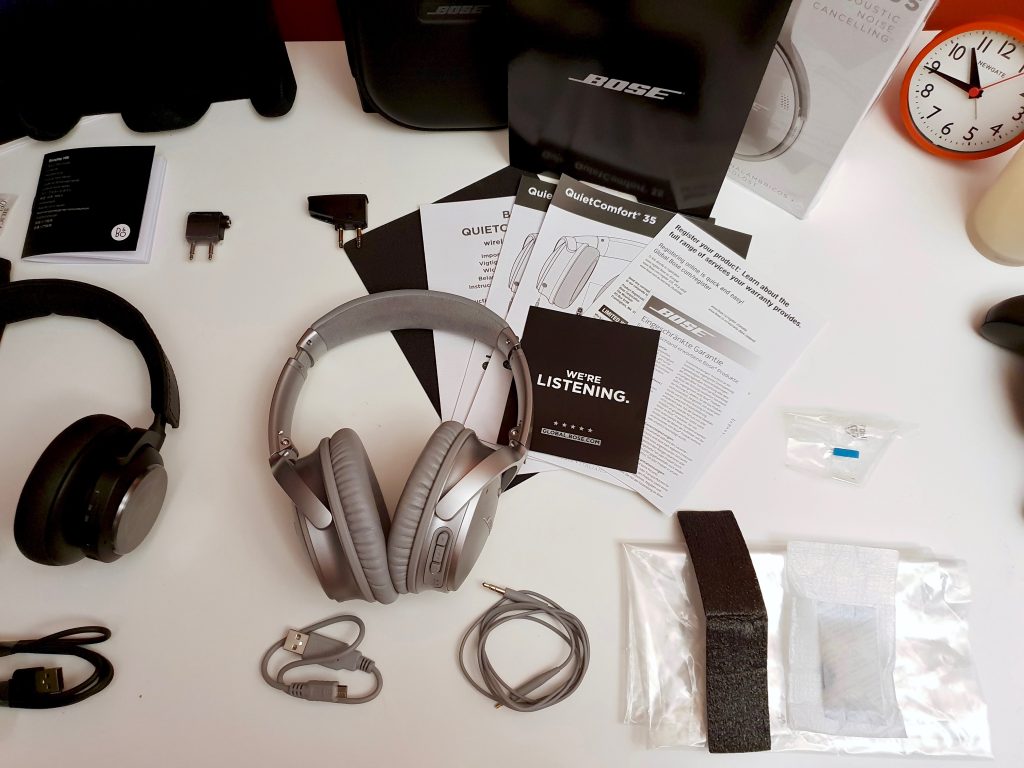
Both headphones include cables, and aeroplane adapters. The Beoplay cable feels to be higher quality, but I don’t have the necessary adapters to try the silly 2.5mm cable the Bose QC35 come with on the H9i to directly compare any potential difference in sound quality. The H9i come with a better cable for charging, with it being a longer USB-C cable that has been designed to look better to the eye compared to the cheap looking Bose cable (cable aesthetics aren’t really a deal breaker though).
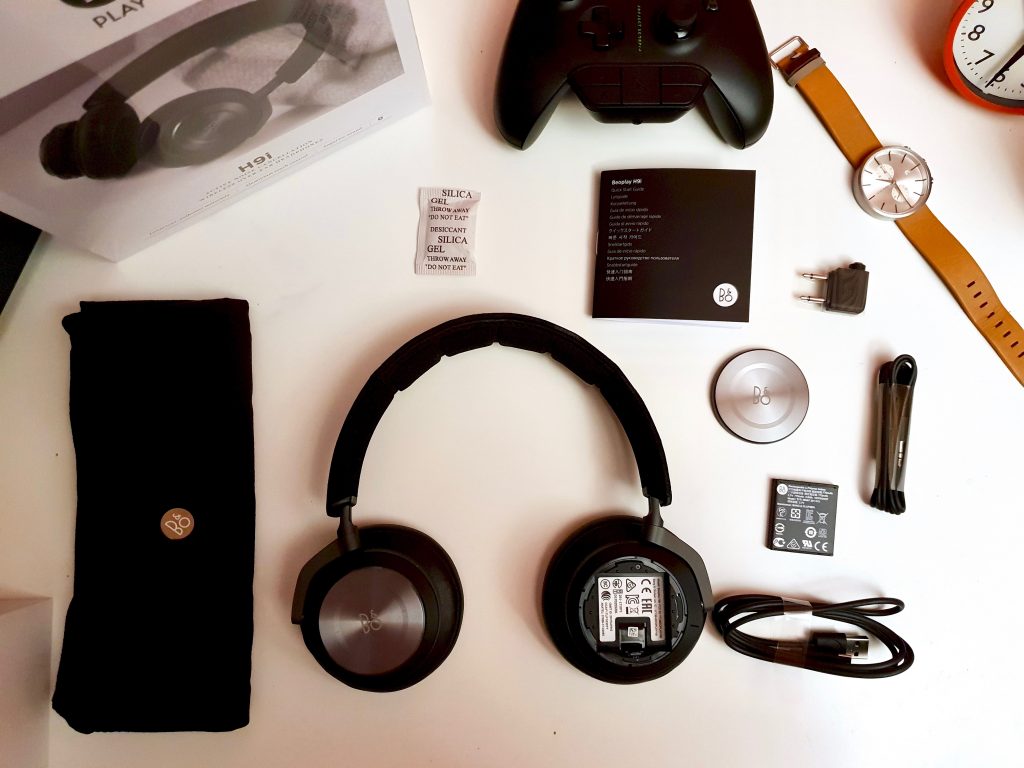
Winner? Draw.
While QC35s include a better carrying case compared to the H9i’s cloth carry bag, the H9i come with a removable battery and a 3.5mm headphone jack. The Beoplay box is nicer, since this section does mention on packaging.
Miscellaneous
The Beoplay H9i offer something B&O refer to as Transparency Mode, this allows you to swipe up on the right ear cup to let in the outside noise. Music is paused, and the headphones use the microphone array to let the outside sound in. I was initially worried about using this for things such as crossing the road, but transparency mode has not impacted my spacial awareness in the slightest so I personally feel comfortable with how well I’ll be able to hear any cars/vehicles that I can’t see. This mode is especially useful when your hands are full, allowing you to switch it on when walking around a shop for example and still have both hands free to do your shopping and carry your basket. The H9i also feature USB Audio, allowing you to plug them into a PC or Mac and use them over USB and charge them at the same time. Very useful.
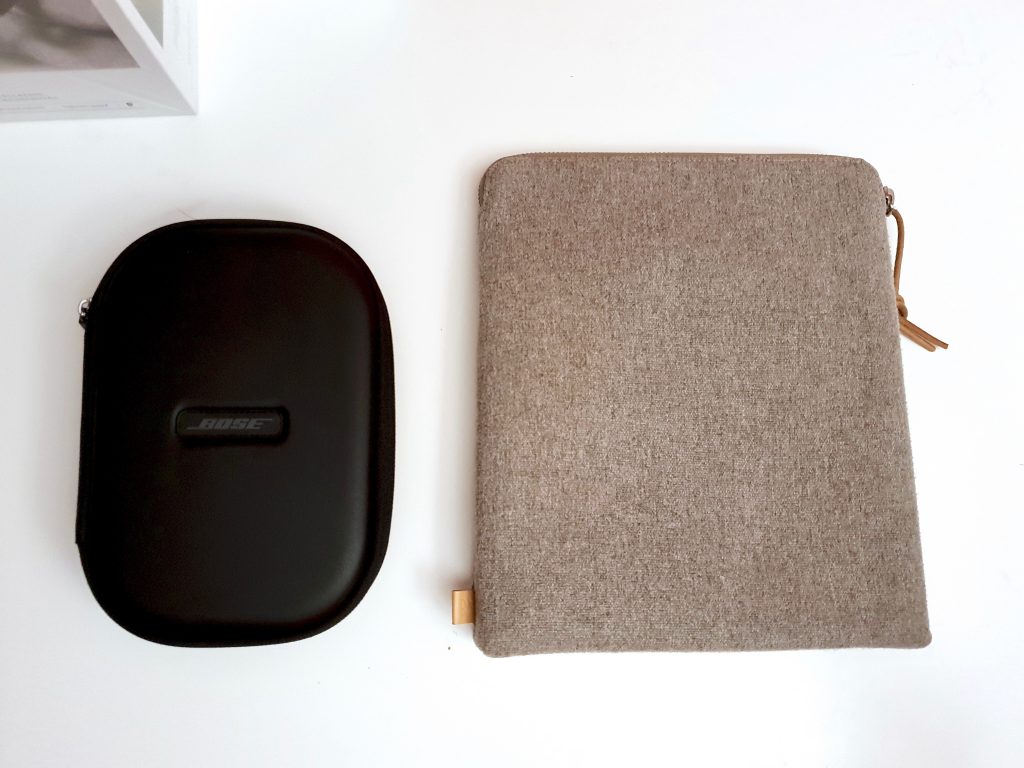
The H9i also offer a useful proximity sensor, which will automatically pause the music when you take them off and will automatically play music when you put them on. I quite enjoy how I can turn the headphones on, wait a few seconds for the proximity sensor to calibrate, and then put them on and music will automatically play without taking my phone out of my pocket. The proximity sensor was somewhat unreliable at launch, but this has been fixed in a firmware update and has no problems at all when instructions are followed (essentially with the headphones in the flat position but in the air, turn them on and wait for the light to go off – then put them on). The proximity sensor can be switched off too.
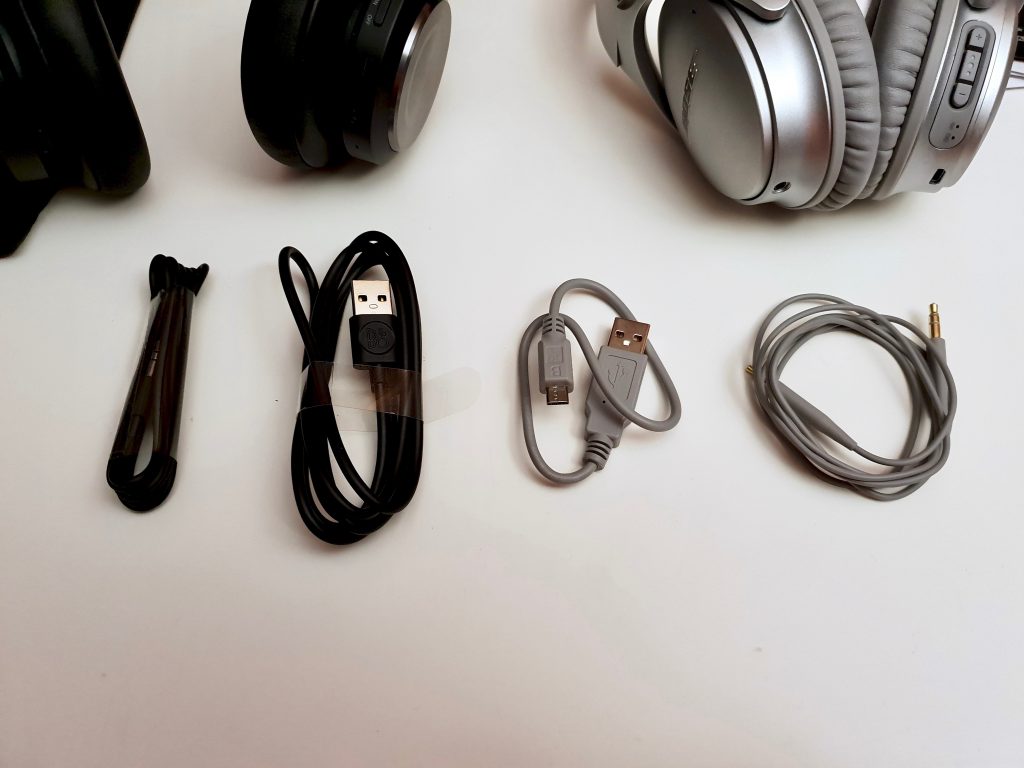
Both devices can pair to two devices at once, you just have to pause/mute audio on one device and play on the other to switch between them. The QC35 lets you manage the devices via the Bose Connect app to remove/replace devices, whereas with the H9i you need to use the pairing function on the headphones themselves.
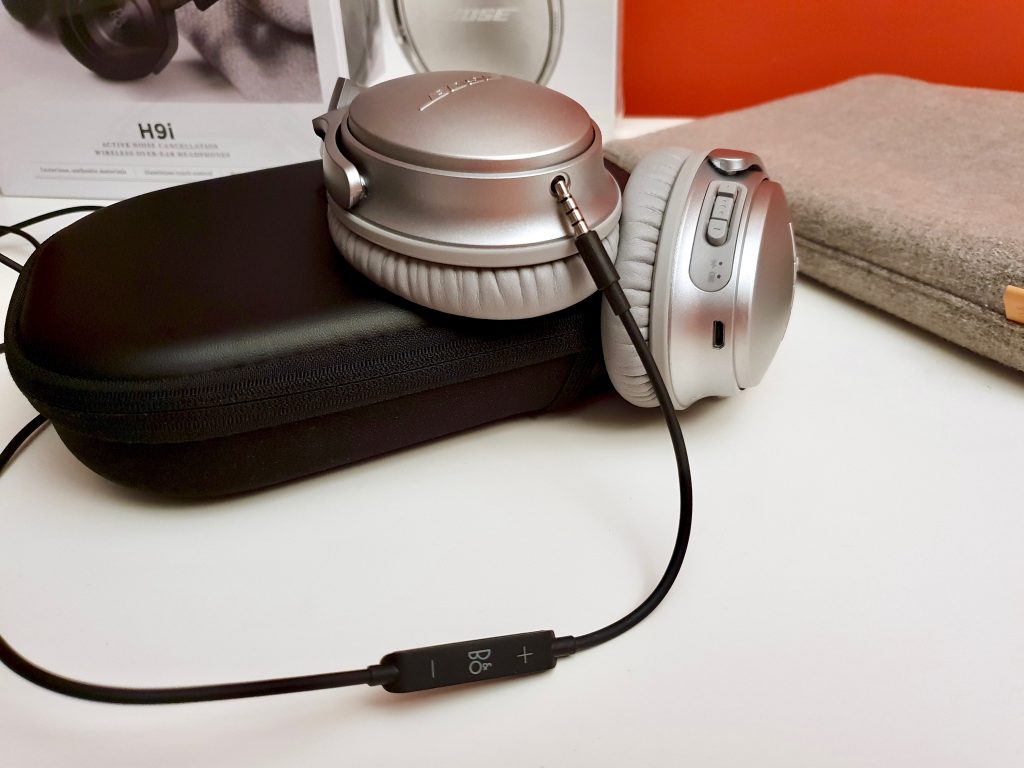
One annoyance with the QC35 is the cable situation. They uses a Micro USB connector for charging, and most annoyingly they use a 2.5mm headphone jack on the headphones themselves (the cable included in the box is 2.5mm one end, and 3.5mm the other). Cables are easy enough to get, but most of us already have 3.5mm both ends so the use of 2.5mm on-device is needlessly annoying. The QC35 do however feature a voice over feature that tells you your battery life and connected devices when you turn them on, which for me was honestly the most annoying feature I’ve ever experienced from a pair of headphones so I switched it off. Some people might like it though. The QC35 II also feature a Google Assistant button (that can also be repurposed to control the ANC). This is the only difference over the original QC35.
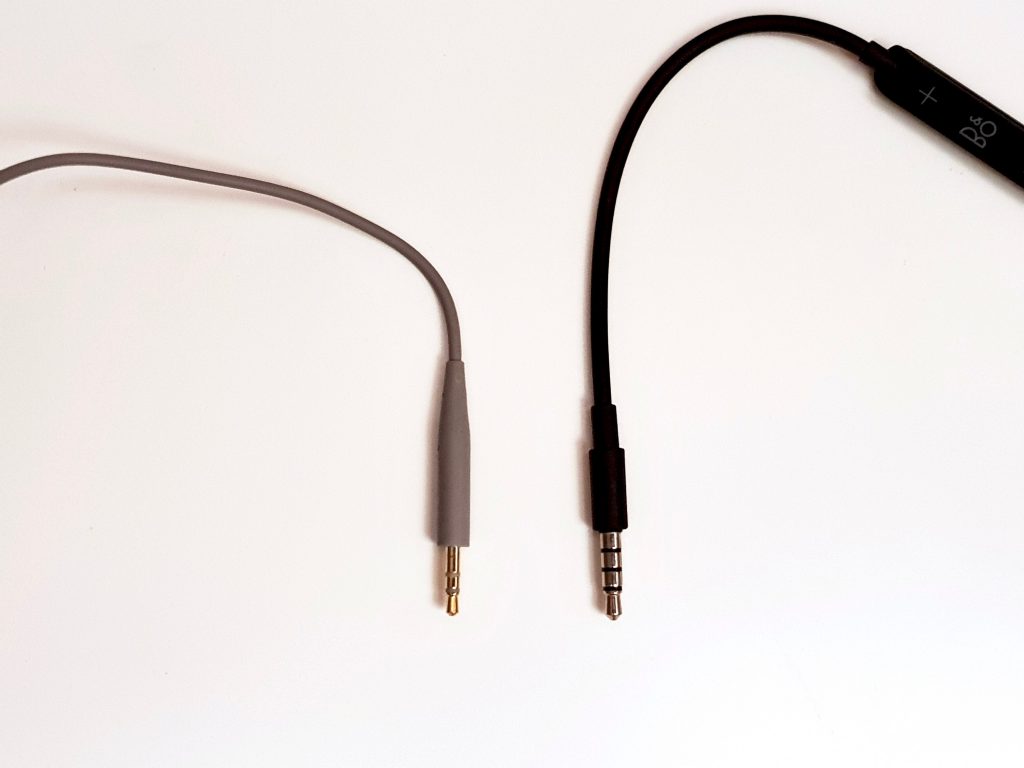
Summary
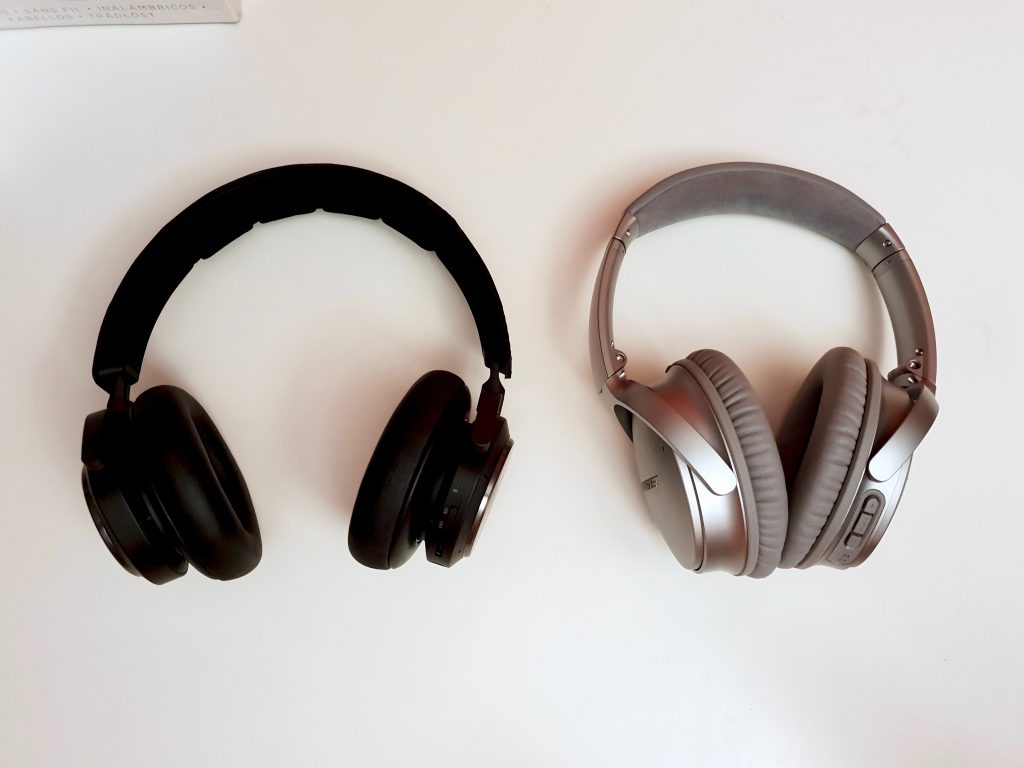
Both of these are undoubtedly excellent headphones, especially given the price of the QC35. For me, as you may have guessed already, the H9i win. The exemplary build quality, sound quality, and design are what win me over. The QC35 are still unrivalled for ANC (although the H9i are close). Both have good battery, but not the best on the market (however the H9i battery is replaceable). Both can be used wired with no battery life should the unthinkable happen (unlike the B&W PX). Both are comfortable with no glasses on, but the H9i are comfortable with glasses unlike the QC35.
The H9i RRP for £449 but the QC35 RRP for £329. If you’re willing and able to spend the extra money I’d highly recommend the H9i over the QC35. If you aren’t, go for the QC35 (if you go for the series I, you can likely get them for under £300 too). The QC35 may not be as good as the H9i, but they’re still very good wireless over-ear noise cancelling headphones (and given the quality of the ANC, comfort, and relatively sturdy feel for a pair of plastic headphones, I’d recommend them over the Sony WH-1000XM2 too). It’s always worth checking headphones out before buying, or buying from somewhere with a relaxed returns policy so you can take them back if you’re unhappy. However, though, I don’t think you can really go wrong with either the H9i or QC35 – they’re both worth buying. If the H9i didn’t exist, I’d pick the QC35 over the competition from companies such as Sony, Bowers & Wilkins, and Beats any day.
Beoplay H9i Pros and Cons:
+ Brilliant sound
+ Brilliant design
+ Excellent Active Noise Cancellation
+ Replaceable Battery
+ 2 Year Warranty as standard
+ Can be used when battery has ran out via 3.5mm cable
+ Can be used over USB with devices that support USB Audio
+ Unrivalled build quality
+ Comfortable
– Slight hiss when no music is playing in quiet environments with ANC switched on
– App is not as feature rich as Bose or Sony’s
– Comes with carry bag, not case
Bose QC35 Pros and Cons:
+ Light weight
+ World-class ANC
+ Good sound
+ Comes with hard case
+ Comfortable
+ Can be used when battery has ran out via 3.5mm cable
– 2.5mm Audio jack
– Plastic build
– Sound could be better
– No replaceable battery
– Design is dated
